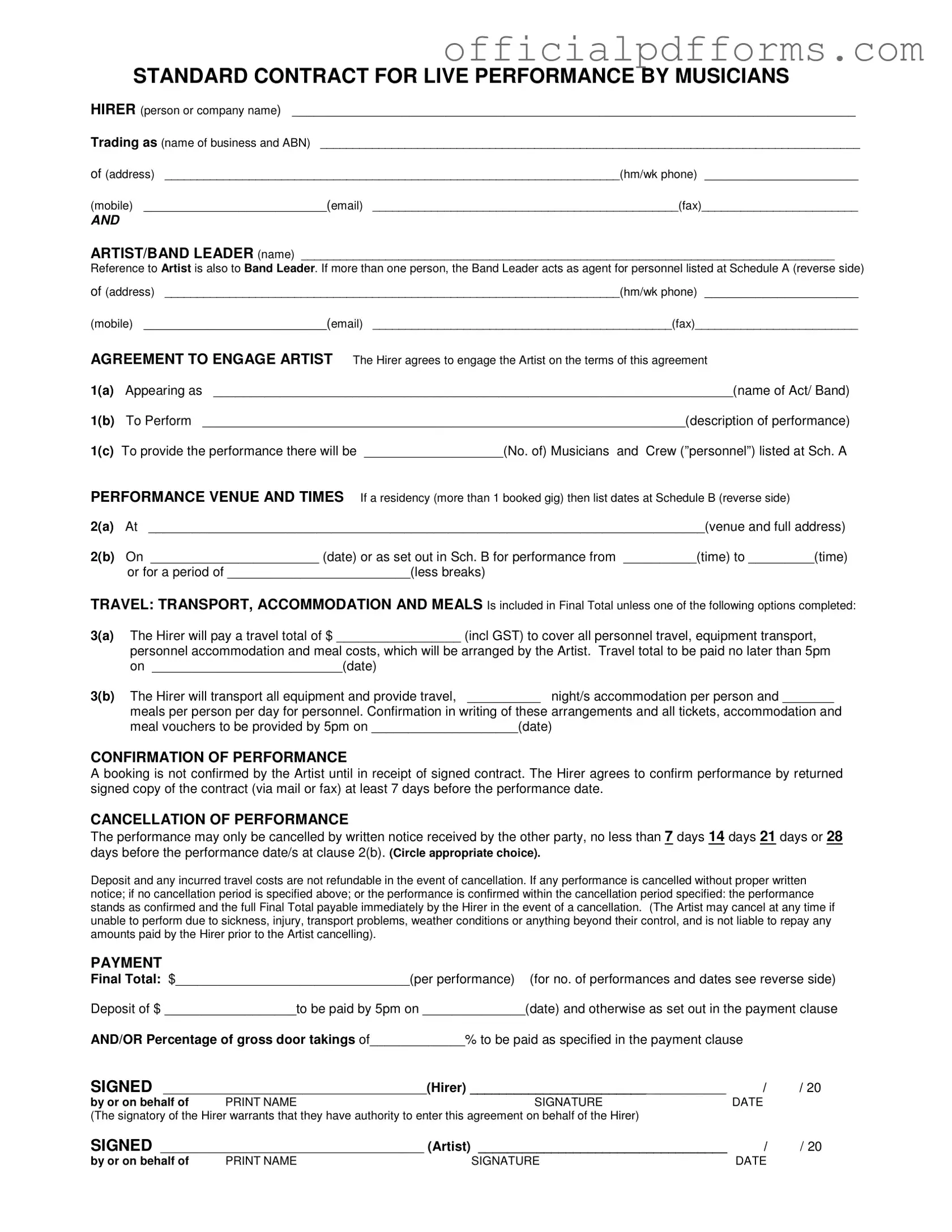Misconception 1: The Live Performance Contract is only necessary for large events.
This contract is essential for performances of any size. Whether it’s a small gig or a major festival, having a written agreement helps protect both the artist and the hirer.
Misconception 2: Once signed, the contract cannot be changed.
While the contract is a binding agreement, it can be amended if both parties agree. Any changes should be documented in writing to avoid misunderstandings.
Misconception 3: The artist is responsible for all travel and accommodation costs.
The contract clearly outlines that the hirer is responsible for these expenses unless otherwise agreed. This ensures that artists can focus on their performance rather than logistics.
Misconception 4: The performance is confirmed without a signed contract.
A performance is not officially confirmed until both parties have signed the contract. This step is crucial to ensure mutual understanding and commitment.
Misconception 5: Cancellation policies are flexible and can be ignored.
The contract specifies strict cancellation policies. Written notice is required, and failure to comply may result in financial penalties, including the loss of deposits.
Misconception 6: The hirer has no obligations regarding the performance venue.
The hirer is responsible for providing a safe and suitable venue. This includes ensuring all equipment is in good condition and that necessary permits are obtained.
Misconception 7: Artists can sell merchandise without restrictions.
The contract allows artists to sell merchandise, but it must be from a mutually agreed position. This ensures that both the artist and hirer benefit from sales during the event.
